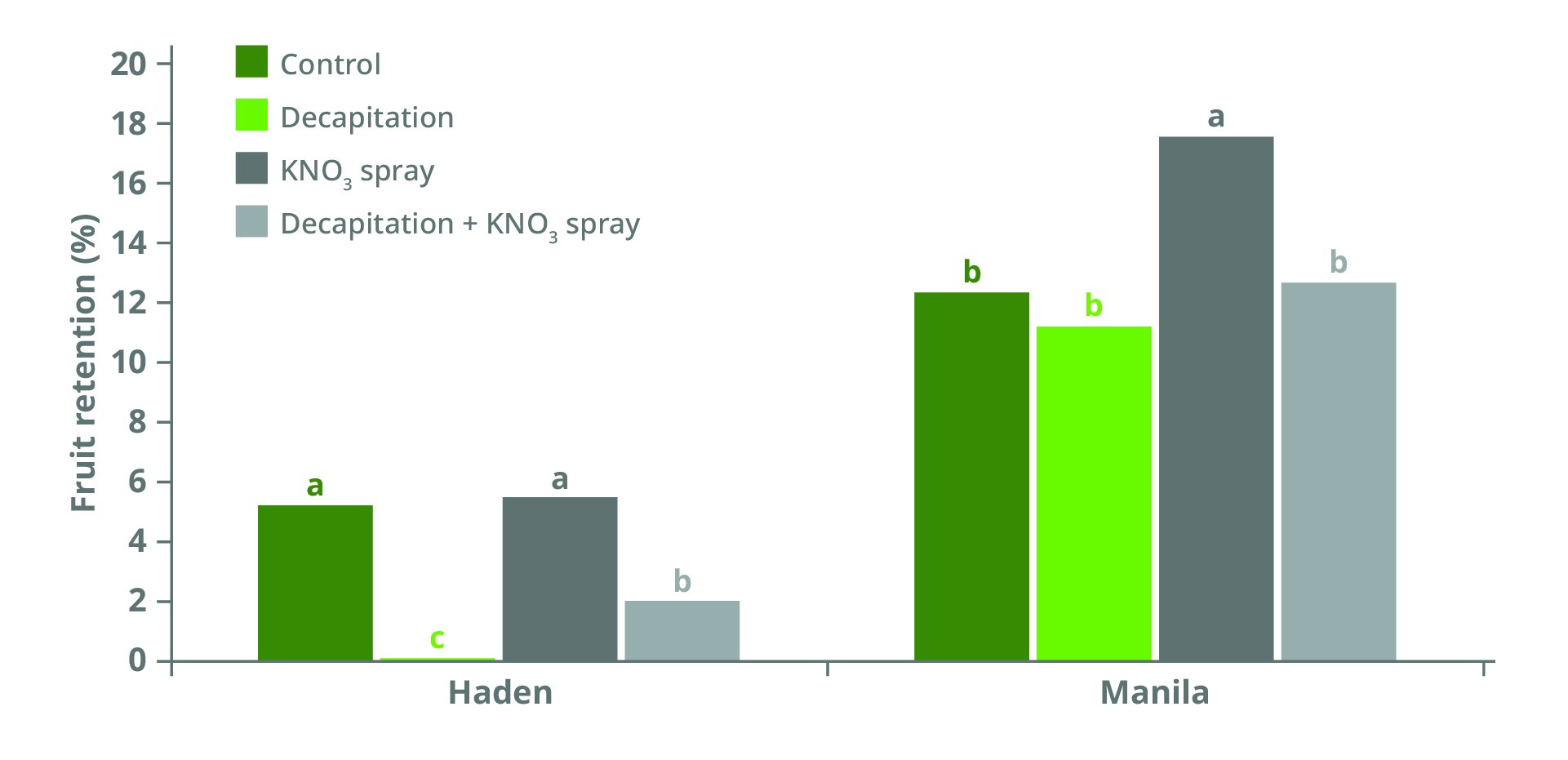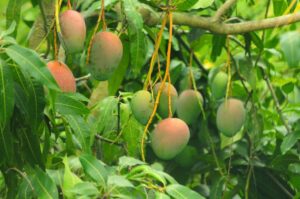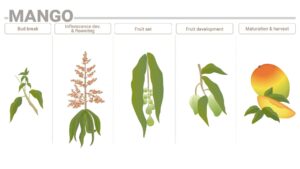Fruiting behavior of "Haden" and "Manila" shoots in response to apical bud pruning (decapitation) and/or single KNO3spray. Trees used were 9-year-old, planted at 10 x 10 m and grown on a sandy and well-drained soil at Tecomán, Colima on the west coast of central Mexico. Treatments were: untreated control, shoot decapitation, single spray of 80 g KNO3/liter of water and combined decapitation and KNO3 spray. Sprays were applied with a hand sprayer to all leaves of corresponding shoots until run-off. Treatments were applied in mid-January during the natural flowering period in each cultivar.
Percentage of flowering shoots was highest in both cultivars for the KNO3 spray treatment, but spraying and decapitating combined produced triple and nearly double the number of panicles/shoot in Haden and Manila respectively, as compared with untreated controls. Highest fruit retention rates in both cultivars were found for KNO3sprayed shoots, although in Haden the rate was statistically equal to that of the untreated control (Figure 1). Spraying of Manila trees alone with KNO3 produced the highest yield, 1,64 fruit/shoot, or about twice the yield in relation to the rest of treatments. Fruit size and quality were not affected by increased fruit set.

Figure 1. The effect of treatments on the fruit retention (%) of "Haden" and "Manila" mango cultivars.



